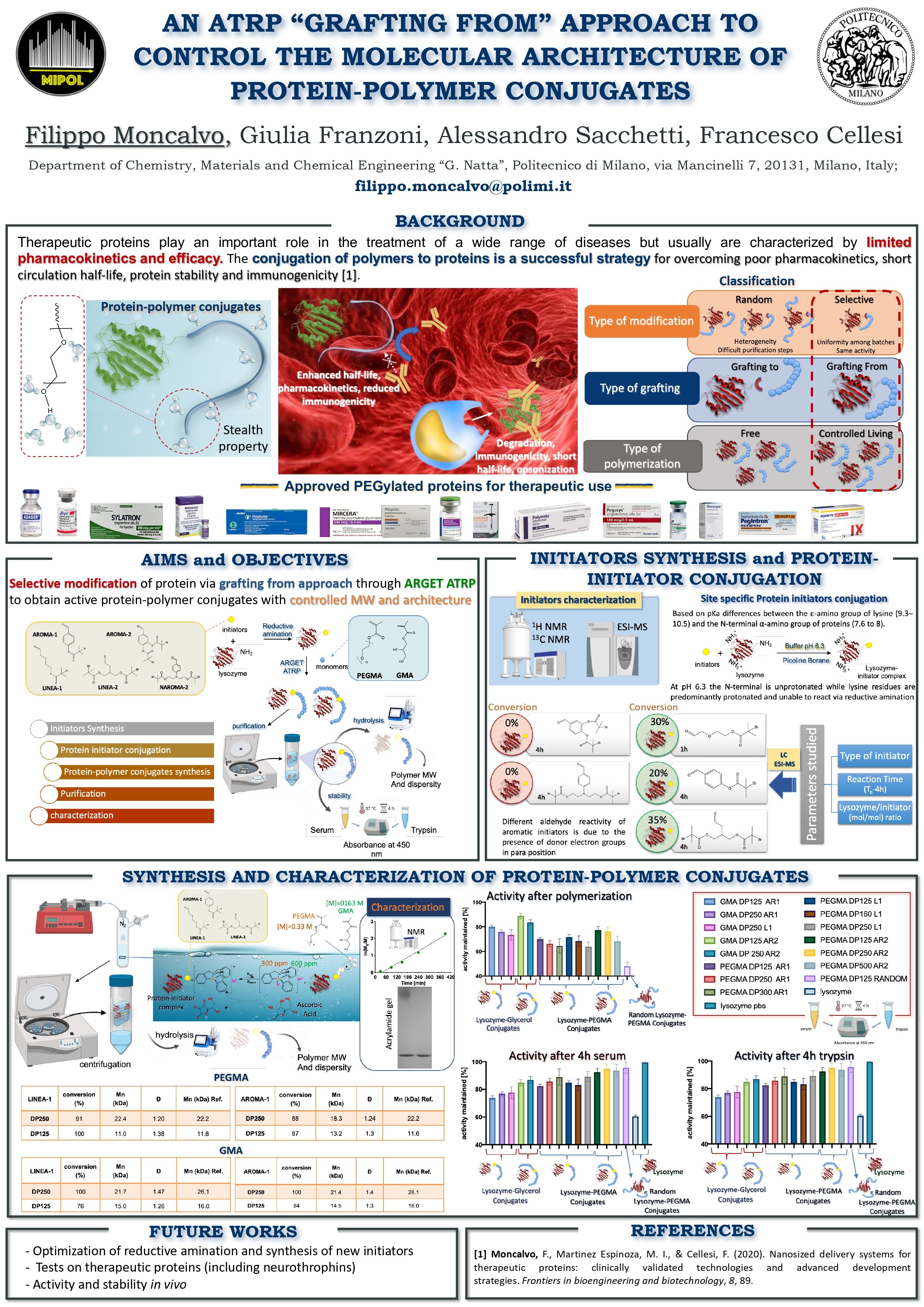An ATRP "Grafting from" approach to control the molecular architecture of protein-polymer conjugates
Nanomedicine is the use of nanotechnology in healthcare to overcome medical challenges and solve shortcomings faced by conventional medicine, such as poor drug and therapeutic protein bioavailability, limited target specificity and organ toxicity. Nanomedicine allows to reduce toxicity and increase efficacy and pharmacokinetics of drugs. The “Nanomedicine and Nanomaterial Laboratory” of the Polytechnic University of Milan, Italy, conducts a promising research focused on the synthesis of innovative polymers using controlled living polymerization techniques.

Therapeutic proteins are currently used in the treatment of autoimmune and infectious diseases, cancer and metabolic disorders and for the production of protein vaccines. However, once introduced into the body, therapeutic proteins are subjected to opsonization, activation of immune system, proteolytic degradation, short elimination half-life and low efficacy. Protein-polymer conjugates overcome the limitations of therapeutic protein because the presence of hydrophilic polymer chains linked on the surface of the protein avoids opsonization, hides the protein to the immune system, protects it from proteolytic degradation and increases its hydrodynamic volume leading to lower renal clearance, higher half-life and more efficacy and safety. Among different approaches for protein-polymer hybrids synthesis, in this work the “grafting-from” approach, where a well-defined polymer can be grown directly from a specific site of the biomolecule, a site-specific protein modification followed by a controlled/living polymerization (ATRP) were explored in order to create a new generation of protein-polymer conjugates, synthesized under biologically friendly conditions. Specifically, this approach may improve purification procedures and yield significantly, reducing costs.
For this purpose, a library of different mono- and multi- arm ATRP initiators functionalized with an aldehyde group were synthesized. Afterwards, these initiators were selectively linked to the native proteins at N-terminal via reductive amination at specific pH, in order to initiate the polymerization at a protein site which was sufficiently far away from the active domain. Lysozyme was selected as model protein for these tests to optimize the reactions parameters. ARGET ATRP of polyethylene glycol monomethacrylate (PEGMA) and glycerol monomethacrylate (GMA), were carried out on these protein-initiators in phosphate buffer, in order to obtain macromolecules with stealth properties and high functionality. Different lysozyme-poly(PEGMA) and lysozyme-poly(GMA) conjugates were synthesized and characterized in terms of topology (linear, two-arm), molecular weight, enzymatic activity and stability in human serum and trypsin solution. Results showed that protein activity was almost all maintained for all protein-polymer conjugates and their protein stability was higher than native protein. Specifically, the two-arm conformation proved to be more promising than mono arm when selective modification was used. Furthermore, PEGMA based conjugates were characterized by a higher stability from proteases degradation due to brush monomer structure. This approach will be tested soon with therapeutic proteins, like neutrophins, in order to increase their half-life in vivo. The protein modification at one specific site with the synthesis of two or more well defined polymer chains from one site obtained under environmentally friendly environment, may pave the way to a new generation of protein polymer conjugates with an enhanced stability and maintained activity.
https://www.frontiersin.org/articles/10.3389/fbioe.2020.00089/full
Moncalvo, F., Martinez Espinoza, M. I., & Cellesi, F. (2020). Nanosized delivery systems for therapeutic proteins: clinically validated technologies and advanced development strategies. Frontiers in bioengineering and biotechnology, 8, 89.

Filippo Moncalvo is conducting a thesis work works in the “Nanomedicine and Nanomaterial Laboratory” of prof. Francesco Cellesi. He was one of the five winners of the Young Scientist Best Poster Award competition of the Milan Polymer Days edition 2021. He presented an interesting application of biocompatible hydrophilic polymers for the delivery of therapeutic proteins in humans. Specifically, linear and brush polymers were synthesized adopting the “grafting from” technique from one specific protein site under environmentally friendly environment. This approach may pave the way to a new generation of protein polymer conjugates with an enhanced stability and maintained activity.